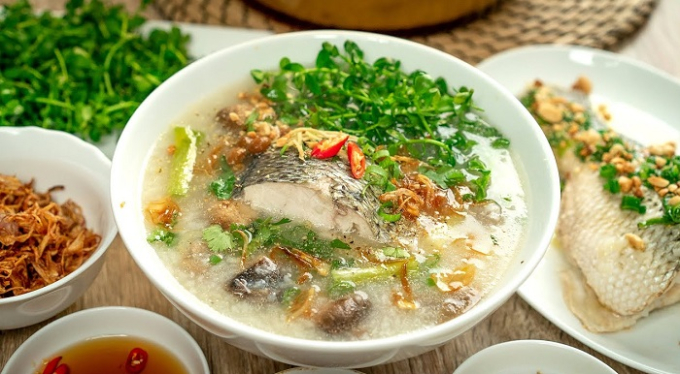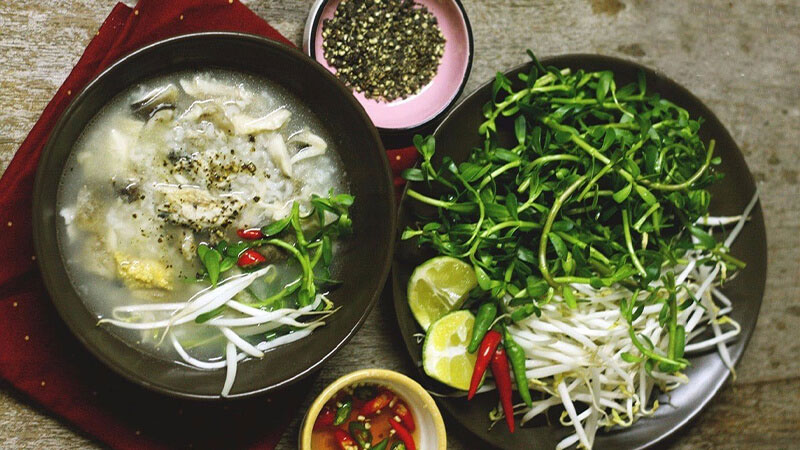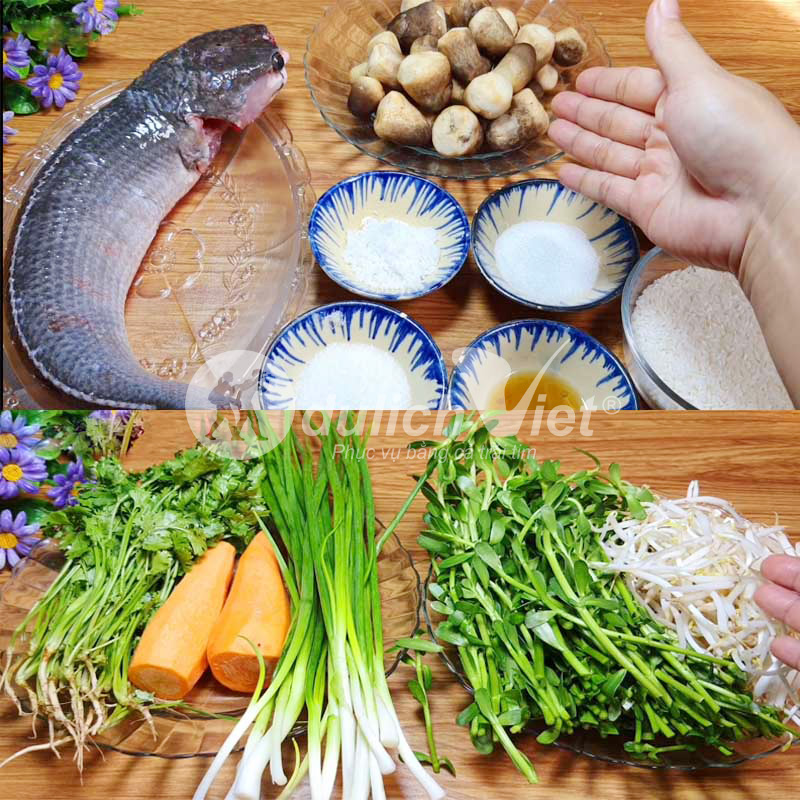Cháo Cá Lóc Rau Đắng
1. What is Cháo Cá Lóc Rau Đắng?
Cháo cá lóc rau đắng is a traditional rice porridge (congee) made with snakehead fish (cá lóc) and served with rau đắng, a bitter herb native to the Mekong Delta. This dish is popular in Sóc Trăng and other southwestern provinces of Vietnam.
Though simple in appearance, it offers a delicate balance of flavors—the sweetness of fish broth, the smoothness of rice, and the mild bitterness of herbs—making it a comforting and deeply local specialty.
2. Characteristics of the Dish
-
Warm and hearty rice porridge with flaky, tender fish meat
-
Served with a generous amount of rau đắng (bitter herbs), known for its slightly bitter but refreshing taste
-
Light yet flavorful, making it perfect for breakfast, light lunch, or when recovering from illness
-
The bitterness of the herb balances the natural sweetness of the fish-based broth
3. Ingredients and Preparation
Main ingredients:
-
Snakehead fish (cá lóc) – firm and sweet-flavored
-
Rice – cooked until soft and slightly creamy
-
Shallots, ginger, and garlic – for aroma
-
Salt, pepper, and fish sauce – for seasoning
-
Rau đắng (bitter herb) – fresh, washed, and served on the side or mixed in
-
Optional: scallions, chili, lime juice
How it’s made:
-
The snakehead fish is cleaned, boiled, and deboned. The boiling water is kept as the base broth.
-
Rice is washed and slowly cooked in the broth until thick and smooth.
-
Meanwhile, the fish meat is seasoned with pepper and fish sauce, and sometimes sautéed lightly.
-
Once the porridge is ready, the fish is added on top.
-
Served with fresh rau đắng and other condiments like lime, chili, or pepper.
4. How to Enjoy It
-
Eat it hot for the best flavor and texture
-
Add fresh rau đắng into the bowl to slightly wilt in the heat
-
Optionally, squeeze in a bit of lime, add chili slices, or sprinkle pepper
-
Often enjoyed as a breakfast dish, or a restorative meal for the sick or elderly
Though rau đắng may be unfamiliar at first, it provides a unique contrast that locals love—cleansing, cooling, and slightly medicinal.
5. Cultural and Regional Importance
-
Commonly found in rural homes, street-side eateries, and traditional markets
-
Reflects the simplicity and freshness of southern Vietnamese cuisine
-
Snakehead fish is abundant in Mekong Delta rivers, and rau đắng grows naturally in the region’s wetlands
-
A dish that connects people to the land and to family traditions, often cooked by parents or grandparents as a nurturing meal
Conclusion
Cháo cá lóc rau đắng is a rustic but meaningful dish from Sóc Trăng. Its light broth, tender fish, and bitter greens represent the flavors of the Mekong Delta—honest, healthy, and deeply satisfying. If you're visiting southern Vietnam, this humble bowl of porridge is something you shouldn't miss.




